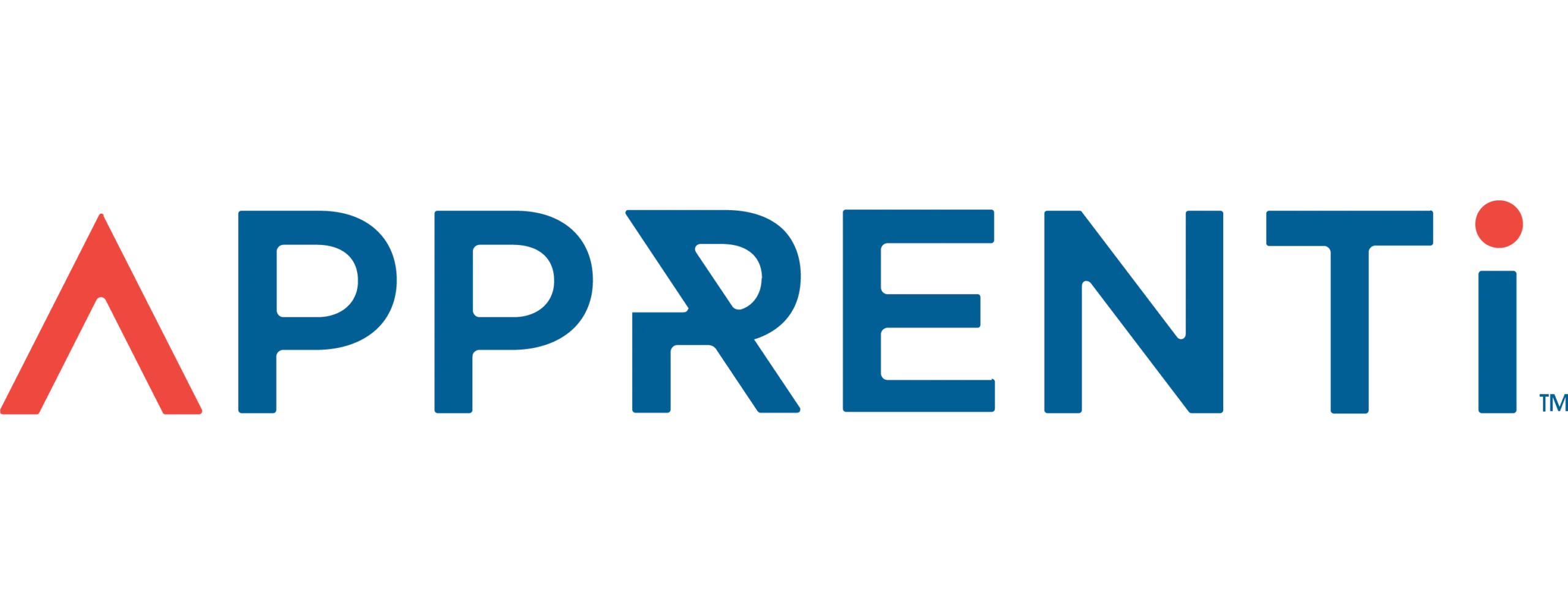Article Summary
- Understand how the Supporting Apprenticeship Colleges Act of 2025 can provide grant funding for your construction and manufacturing apprenticeship programs.
- Identify key eligibility requirements and application processes to maximize your community college’s chances of securing these grants.
- Explore strategies to expand your existing apprenticeship pathways and forge stronger partnerships with local employers.
- Leverage this potential funding to create more debt-free career opportunities for students and help close the skills gap in your community.
Want to Learn More About Your Registered Apprenticeship Opportunities?
BOOK A FREE CONSULTATION
What Does This New Act Mean?
Alright, let’s dive into the Supporting Apprenticeship Colleges Act of 2025. Think of this as a potential game-changer for community colleges like yours, especially if you’re running or looking to expand construction and manufacturing apprenticeships. The core idea is to inject federal grant money into institutions that are actively sponsoring these vital learn-and-earn programs. It’s all about strengthening the pipeline of skilled workers in crucial industries. This isn’t just another piece of legislation; it’s a clear signal that policymakers are recognizing the immense value of apprenticeships and the pivotal role community colleges play.
Understand the core funding provisions
The bill specifically directs the Department of Education to award grants to higher education institutions, like community colleges, that sponsor construction and manufacturing-oriented apprenticeship programs. This funding is designed to help you build capacity, modernize equipment, develop curricula, or provide supportive services to apprentices. The goal is to make it easier for colleges to offer and scale high-quality apprenticeships. Imagine being able to upgrade that welding lab or offer childcare assistance to your apprentices – this Act aims to make that more feasible.
Learn about eligibility requirements
So, who gets a slice of this pie? Generally, institutions of higher education that are official sponsors of registered apprenticeship programs in construction or manufacturing will be eligible. This means your college needs to have a direct hand in managing the apprenticeship, not just providing the related technical instruction (RTI) for an employer-led program (though partnerships are still key!). Key things they’ll likely look for:
- Your status as an institution of higher education.
- Active sponsorship of registered apprenticeship programs in the specified sectors.
- A clear plan for how the grant funds will be used to enhance or expand these programs.
- Demonstrated partnerships with local employers in these industries.

Review application deadlines
While the Department of Education will announce specific dates for the 2025 Act upon its passage and funding, preparing now is crucial. Historically, federal grant opportunities have defined application windows. Staying proactive and having your program data, employer letters of support, and a draft proposal ready will give you a significant head start. Don’t wait for the official announcement to start planning!
Explore grant distribution methods
Typically, grants like these are competitive. The Department of Education will likely issue a Notice of Funding Availability (NOFA) outlining the specific criteria, priorities, and how applications will be scored. Funds might be distributed based on the strength of the proposal, the demonstrated need, the potential impact on the local workforce, and the college’s capacity to manage the grant effectively. Some funds might also be earmarked to encourage new program development or to support institutions serving underrepresented populations, aligning with the broader goal of increasing equity in high-demand fields.
Pro tip: Start documenting your current apprenticeship successes and employer partnerships now. Strong data and testimonials will be invaluable when grant applications open. This shows a track record and readiness to scale.
Let’s Talk About Community College Benefits
This Act isn’t just about a one-time cash injection; it’s about empowering your community college to do what it does best, even better. We’re talking about a real opportunity to deepen your impact on students’ lives and your local economy. For deans and administrators, this means new avenues for innovation and growth in some of your most critical workforce development pathways. Think about the ripple effect: more resources mean better programs, which attract more students and more employer partners. It’s a virtuous cycle!

Calculate potential funding amounts
While the exact figures will depend on congressional appropriations and the specifics of the grant program, the intent is to provide meaningful support. Funding could potentially cover a range of needs, from curriculum development and equipment upgrades to instructor training and apprentice support services. Consider what a significant grant could do for your highest-priority needs in construction and manufacturing programs. Could it help launch a new CNC machining apprenticeship? Or expand your existing electrical program? Start itemizing your dream projects and their associated costs so you’re ready to justify your funding request.
Discover program expansion opportunities
This is where it gets really exciting! With additional resources, you can think bigger. Perhaps you’ve wanted to:
- Add advanced manufacturing credentials to an existing program.
- Develop pre-apprenticeship programs to create a stronger feeder system from local high schools. For instance, a tool like GoSprout’s Pre-Apprenticeship Management Platform can help high schools create pathways for students to gain real-world experience and then seamlessly transition into your college’s registered apprenticeships upon graduation.
- Increase cohort sizes in high-demand apprenticeships.
- Offer more comprehensive supportive services, which studies have shown are important for apprentice recruitment and retention. This funding can be the catalyst to turn those strategic goals into reality, helping you meet the evolving needs of your community and local industries.
Plan your apprenticeship growth
Strategic growth requires a plan. How can this Act support your long-term vision for apprenticeships? It’s not just about more students; it’s about enhancing quality, equity, and employer engagement. You could use potential funds to hire dedicated apprenticeship coordinators, invest in outreach to diverse communities, or build stronger advisory boards with industry leaders. Effective planning now will ensure that if and when these grant funds become available, your college is positioned to maximize their impact. Many community and technical colleges already administer apprenticeship programs, and this Act could significantly bolster those efforts.
Pro tip: Engage your faculty and local employers in brainstorming sessions now. Their input will be crucial for developing a compelling grant proposal that addresses real-world needs and opportunities.
Here’s How Students Win Big
Now, let’s shift focus to the heart of it all: the students. This Act is a massive win for them, offering pathways to skilled careers without the crushing burden of student loan debt. As educators, we know the transformative power of opportunity, and apprenticeships are a golden ticket for so many, especially those from disadvantaged backgrounds. It’s about creating equitable access to well-paid jobs and helping our youth build a solid foundation for their future. This is a core part of why we at GoSprout are so passionate about work-based learning!
Access debt-free career paths
This is huge. Apprenticeships are jobs from day one. Students earn a wage while they learn, meaning they can often graduate with valuable skills, industry-recognized credentials, and zero student loan debt. In a world where college costs are soaring, this is an incredibly attractive proposition. The grants from the Supporting Apprenticeship Colleges Act can help colleges expand these debt-free opportunities, making them accessible to even more students in your community.

Connect with local employers
Apprenticeships are not just training programs; they are direct bridges to employment. Students build relationships with employers throughout their apprenticeship, gaining invaluable on-the-job experience and mentorship. This often leads to full-time employment upon completion, sometimes with the very company that sponsored their training. This Act helps strengthen those college-employer partnerships, ensuring students are learning skills that are in high demand locally.
Build valuable job skills
Students in apprenticeship programs gain both theoretical knowledge (the RTI your college provides) and practical, hands-on skills (the on-the-job training with the employer). This dual approach ensures they are truly job-ready. They learn the ‘why’ in the classroom and the ‘how’ on the worksite. And with tools like the Apprenticeship App from GoSprout, apprentices can have all their training requirements, progress tracking, and communication tools right in their pocket, making it easier to stay on top of their program and get the feedback they need to succeed.
Earn while you learn
The ‘earn while you learn’ model is a cornerstone of apprenticeship. Students receive progressively increasing wages as their skills develop. This financial stability allows them to focus on their training and support themselves and their families. It makes career advancement accessible to individuals who might not be able to afford traditional full-time college programs. By supporting apprenticeship colleges, this Act directly supports students’ ability to gain economic self-sufficiency while building a career.
Pro tip: Highlight the ‘earn while you learn’ aspect and potential debt-free completion in your student recruitment materials. This is a powerful message that resonates deeply with students and their families.
Let’s Examine Industry Impact
The Supporting Apprenticeship Colleges Act isn’t just a boon for colleges and students; it’s a strategic investment in the health of our nation’s industries, particularly construction and manufacturing. These sectors are crying out for skilled talent, and this Act aims to directly address that critical need. When community colleges are empowered to expand their apprenticeship programs, local employers are the direct beneficiaries, gaining access to a pipeline of well-trained, motivated workers ready to hit the ground running. This is about closing that talent gap we hear so much about.
Meet workforce development needs
Let’s be frank: employers in construction and manufacturing are facing significant workforce challenges. Baby boomers are retiring, and there’s a persistent shortage of workers with the specialized skills these industries require. Apprenticeships are a proven solution to this problem. By providing grants to colleges, this Act helps scale up the very programs that produce these skilled workers. States are increasingly looking to foster registered apprenticeships as a key workforce development strategy. This legislation provides federal support to amplify those efforts, ensuring industries have the talent they need to thrive and innovate.

Strengthen employer partnerships
Successful apprenticeships are built on strong partnerships between educational institutions and employers. This Act encourages and supports these collaborations. When colleges have more resources, they can be even better partners to industry – developing more customized training, responding more nimbly to changing skill demands, and co-investing in talent development. For employers looking to build their workforce, understanding the landscape of apprenticeships and available resources is key; that’s where services like GoSprout’s Workforce Planning & Consulting can be invaluable, helping them navigate grants and incentives for launching registered apprenticeships. This Act will further incentivize employers to engage with their local community colleges.
Build sustainable talent pipelines
This isn’t about a quick fix; it’s about building long-term, sustainable talent pipelines. When colleges and employers work together through robust apprenticeship programs, they create a continuous flow of skilled individuals into the workforce. This predictability is crucial for businesses, allowing them to plan for growth and take on new projects with confidence. The Act supports the infrastructure needed for these pipelines, ensuring a steady supply of talent for years to come. It’s an investment in the future competitiveness of these vital American industries.
Pro tip: Reach out to your local Workforce Development Boards and industry associations. Partnering with them can help you identify employer needs, recruit apprentices, and build broader support for your programs when seeking grant funding.
Here’s Why Bipartisan Support Matters
When we see a bill like the Supporting Apprenticeship Colleges Act gaining traction with lawmakers from both sides of the aisle, it’s a really positive sign. Why? Because bipartisan support significantly increases the likelihood of a bill not only passing but also being effectively implemented and sustained over time. It signals that the goals of the legislation – strengthening workforce development, supporting students, and boosting key industries – are seen as universally beneficial. This isn’t a partisan issue; it’s an American competitiveness issue, and that’s something everyone can get behind.
Understand congressional backing
Legislation that enjoys support from both Democrats and Republicans tends to move more smoothly through the often-complex legislative process. When members of Congress from different parties co-sponsor a bill or speak out in its favor, it demonstrates a shared understanding of the problem and a collective agreement on the proposed solution. For the Supporting Apprenticeship Colleges Act, this means a greater chance of securing the necessary votes in both the House and Senate. Keep an eye on which representatives are championing this – it’s a good indicator of its momentum.
Review economic benefits
One of the key drivers of bipartisan support is often the clear economic benefits a bill offers. Investing in apprenticeships is a smart economic move. It helps close the skills gap, reduces unemployment, increases productivity, and can lead to higher tax revenues as more people enter well-paying jobs. These are outcomes that appeal to policymakers across the political spectrum. When a bill demonstrates a strong return on investment for taxpayers and the economy as a whole, it’s much more likely to gain widespread approval. The Federal Resources Playbook for Registered Apprenticeship often highlights these economic advantages.
Track legislative momentum
How can you tell if a bill is likely to pass? Look for signs of legislative momentum. This includes things like:
- Successful committee votes.
- Positive hearings and markups.
- Endorsements from key industry groups and educational organizations.
- Increasing numbers of co-sponsors. As the Supporting Apprenticeship Colleges Act moves through these stages, its chances of becoming law become clearer. For community colleges, effectively managing and scaling these programs to demonstrate their value will be crucial. Utilizing a comprehensive tool like GoSprout’s Apprenticeship Management Platform can streamline the administration of apprenticeships, making it easier to track progress, ensure compliance, and report on outcomes, which in turn can bolster the case for continued and expanded legislative support.
Analyze voter support
Ultimately, elected officials are responsive to their constituents. There’s broad public support for programs that create jobs, improve education, and strengthen the economy. Apprenticeships tick all these boxes. When voters see the positive impact of apprenticeships in their own communities – their neighbors getting good jobs, local businesses thriving – they are more likely to encourage their representatives to support legislation like this Act. This grassroots support can be a powerful force in Washington.
Pro tip: Share success stories from your apprenticeship programs with your local and federal elected officials. Personal stories and tangible results are incredibly persuasive and can help build support for the Act.
Conclusion: Supporting Apprenticeship Colleges Act – Your Path Forward
The Supporting Apprenticeship Colleges Act of 2025 represents a significant opportunity for community colleges to enhance and expand their vital role in workforce development. By focusing on construction and manufacturing apprenticeships, this legislation targets key areas of need and provides a pathway for increased resources, program innovation, and student success. For you, as a dean or administrator, this is a chance to further solidify your institution’s position as a leader in creating debt-free career pathways and meeting the talent demands of your local economy.
Embracing this Act means being proactive: understanding its provisions, preparing your programs, and engaging with your partners. It’s about leveraging this moment to build more equitable opportunities for students and stronger talent pipelines for industry. And if you’re looking to truly elevate your apprenticeship programs, consider how custom solutions can make a difference; for example, GoSprout’s Course Development services can help tailor curriculum to meet specific employer needs, further enhancing the value of your offerings.

Let’s work together to seize this opportunity, close our nation’s talent gap, and build a brighter future for our students and communities. Your leadership in championing apprenticeships is more critical than ever.
Frequently Asked Questions
- Q: What is the main goal of the Supporting Apprenticeship Colleges Act of 2025?
- A: The primary goal is to provide federal grant funding to institutions of higher education, like community colleges, to support and expand registered apprenticeship programs specifically in the construction and manufacturing sectors.
- Q: How can my community college prepare to apply for these grants?
- A: Start by documenting your current apprenticeship program successes, strengthening employer partnerships, outlining potential uses for grant funds, and gathering letters of support. Being prepared will allow you to act quickly when applications open.
- Q: Who benefits most from this Act?
- A: Students benefit from more debt-free career pathways and direct connections to employers. Community colleges benefit from resources to expand programs. Employers benefit from a skilled workforce pipeline, and the overall economy benefits from increased productivity and reduced skills gaps.
- Q: What makes an apprenticeship program eligible for funding under this Act?
- A: Eligible programs will likely need to be registered apprenticeships sponsored by an institution of higher education and focused on construction or manufacturing. Specific criteria will be detailed by the Department of Education.
- Q: Why is bipartisan support important for this type of legislation?
- A: Bipartisan support indicates broad agreement on the value of apprenticeships, increasing the chances of the bill passing, receiving adequate funding, and being sustained over the long term, which benefits workforce development efforts.
- Q: How does this Act help in closing the talent gap?
- A: By providing resources to expand high-quality apprenticeship programs in critical sectors like construction and manufacturing, the Act directly helps train more individuals with the specific skills employers urgently need, thus addressing the talent shortage.















